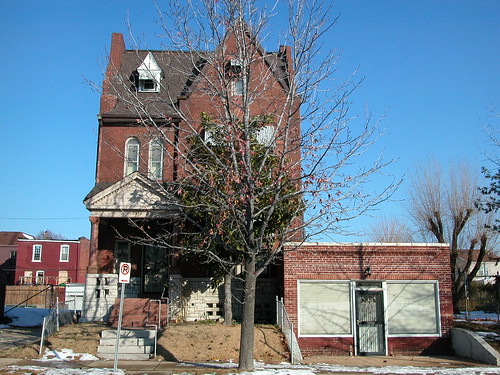The Rehabbers Club brings you an exciting Saturday:
Saturday, May 17
9:30 a.m.
Start at 900 Utah Street
This month’s meeting focuses on south Soulard and eastern Benton Park/Marine Villa, historically part of the same development pattern but separated by the construction
of I-55.
Meet at 9:30 a.m. at 900 Utah (at S. 9th Street, south of the Anheuser-Busch Brewery). We will visit Ray and Maureen Kenski and hear about their long road to opening up a B&B in this gut-rehabbed former multi-family building. It’s one of several buildings in the area recently rehabbed by local developer Kraig Schnitzmeier. His project across the street at 3306 S. 9th just won one of Landmarks Association’s Eleven Most Enhanced Awards, and we’ll have the opportunity to hear Kraig talk about the transformation of this derelict property into a
stunning home.

3306 S. 9th Street. Photo courtesy of Kraig Schnitzmeier.
Our next stop will be a special Preservation Week visit to the Chatillon-DeMenil Mansion (open to us at no charge). DeMenil board member Bill Hart will tell the story of the dramatic rescue and restoration of the mansion 40 years ago and give a special tour highlighting its ongoing rehabilitation challenges. We’ll also have the opportunity to view rarely seen photographs of the blocks to the east, demolished for I-55, which demonstrate the continuity of the urban grid before the neighborhood were severed by highway construction.
Our final stop on the tour will be “The Simon Complex”, as it is sometimes called, on the 1900 block of Cherokee Street. Ray Simon’s project started in the late 1980s and continues today, in the process creating a shaded, secluded courtyard shared by businesses and residents of the antebellum front buildings and the 1890s alley house. This type of semi-private space was once common in the City, but prohibitions against alley dwellings reduced their number considerably. The mix of commercial and residential uses, private and shared space is uniquely urban and
completely magical. Don’t miss it.
The final stop is also (by no coincidence) the site of the Rehabbers Club Used Book Sale, which benefits the Chatillon-DeMenil Mansion. This year we have a strong collection of books including rehabbing, architecture, local interest, gardening, decorating, and tons of fiction. There are also many really nice supplies (mostly of the handled flex-file variety) for your home office. If you can’t make the tour, stop by the sale at 1912 Cherokee from 10-4 Saturday or 12-4 Sunday.





